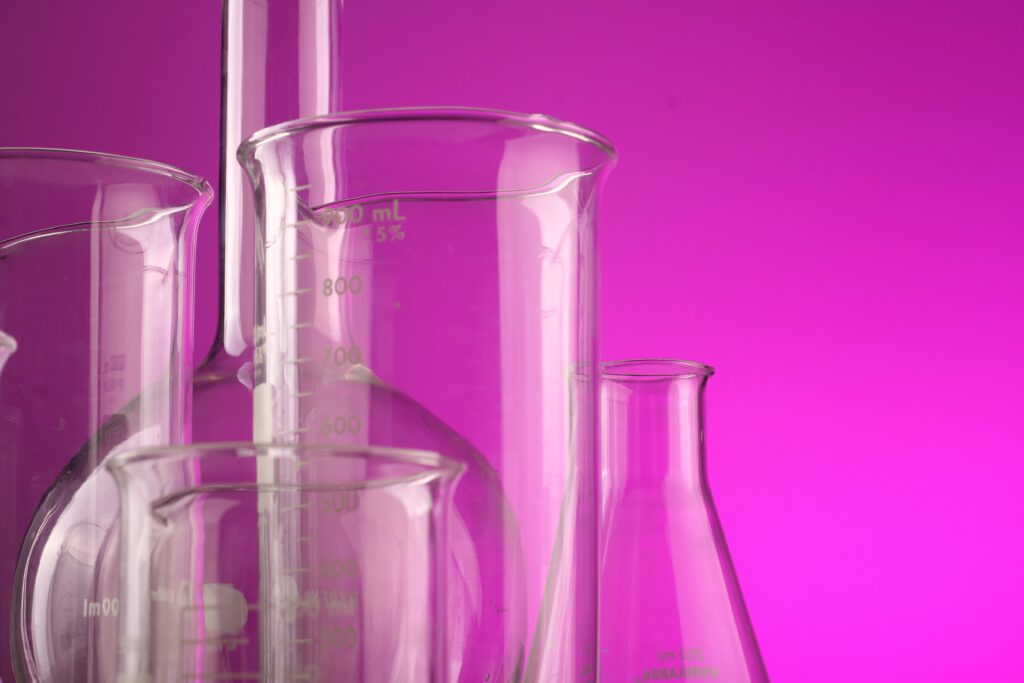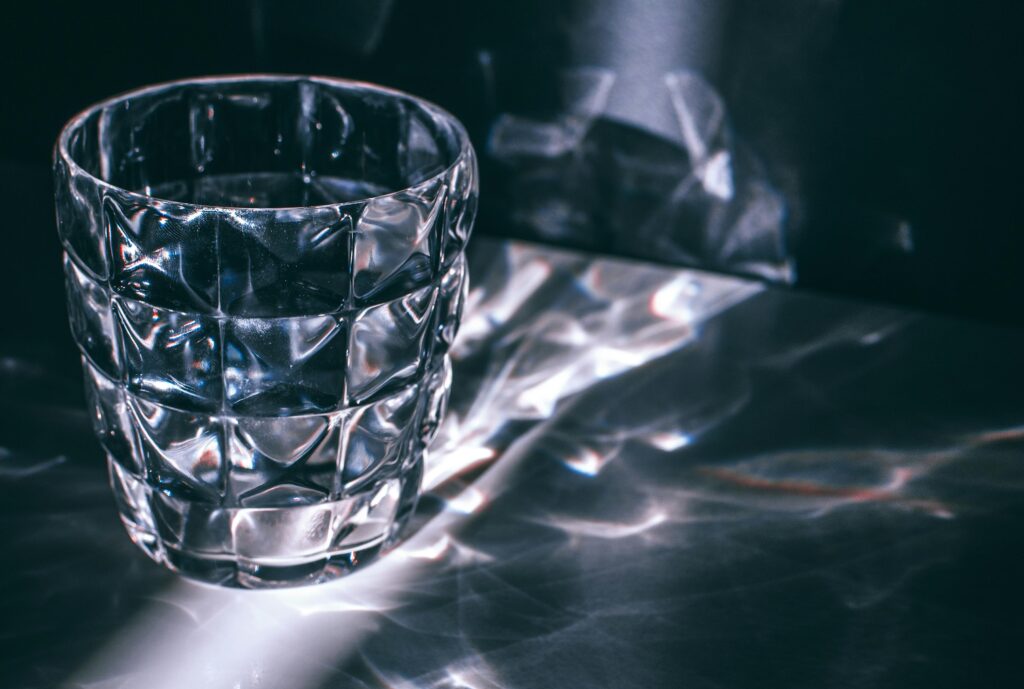The types of glass has been used as an engineering material since ancient times but as a result of the glass industry’s recent explosive growth, glass has emerged as the most adaptable engineering material available today. Natural glass, such as obsidian and rock crystal, was used to create the first glass objects created by humans. Techniques established in the glass industry enable the production of glass of any kind and quality to meet the needs of many industries.
What is Glass?

The glass is composed of several metallic silicates, one of which is usually that of an alkali metal. It is amorphous, transparent, or translucent. It may also be considered a solidified super-cold solution of various metallic silicates with infinite viscosity.
Engineering Properties of Glass
The following properties made the glass popular and useful:
1. It absorbs, refracts, or transmits light.
2. It can take up to high polish and may be used as a substitute for very costly gems.
3. It has no definite crystalline structure.
4. It has no sharp melting point.
5. it is affected by alkalies.
6. It is an excellent electrical insulator at elevated temperatures because glass can be considered an ionic liquid.
7. The ions are not easily moved at room temperature because of the high viscosity. But when the temperature rises, the ions are permitted to flow and thus they will sustain an electric current.
8. It is available in beautiful colors.
9. It behaves more like a solid than most solids in the sense that it is elastic. But when the elastic limit is exceeded, it fractures instead of deforming.
10. It can be worked in many ways that it can be blown, done, or pressed but it is strange to note that it is difficult to cost in large pieces.
11. It is extremely brittle.
12. It is not usually affected by air or water.
13. Ordinary chemical reagents do not easily attack it.
14. It is possible to conventionally use some of its properties such as fusibility, hardness, refractive power, etc to suit different purposes.
15. It is possible to obtain glass with diversified properties. The glasses may be clear colorless, diffused, and stained.
16. It is possible to weld pieces of glass by fusion.
17. It is transparent and translucent. Transparency is the most used characteristic of glass and it is due to the absence of free electrons. For the same reason, it also worked as a good insulator.
18. The glass planes can be cleaned easily by any one of the following methods.
(a) By applying methylated spirit.
(b) painting the glass panes with lime wash leaving them to dry and then washing them with clean water
(c) Applying moist salt to remove paint stains
(d) rubbing finely powdered chalk.
Types of Glass
The glass may be grouped into the following five main categories:
1. Soda-lime glass or Commercial glass
2. Potash-lime glass
3. Potash-lead glass
4. Common glass
5. Borosilicate glass
1. Soda-lime glass or Commercial glass

This type of glass is referred to as soft glass or soda glass. Sodium silicate and calcium silicate are the main components of the mixture.
1. It is available in clean and clear form.
2. It is cheaper.
3. It is easily fusible at comparatively low temperatures
4. It is possible to blow or weld articles made from this glass with the help of simple sources of heat.
Uses
It is used to make plate glass, window glass, and other types of glass tubes as well as other laboratory equipment.
2. Potash-lime glass

This type of glass is also known as the Bohemian glass or hard glass. It is mainly a mixture of potassium silicate and calcium silicate.
1. It fuses at high temperatures.
2. It is not easily affected by water and other solvents.
3. It does not melt so easily.
Uses
This type of glass is used in the manufacture of glass articles that have to withstand high temperatures such as combustion tubes etc.
3. Potash-lead glass

This type of glass is also known as flint glass. It is mainly composed of potassium silicate and lead silicate.
1. It fuses very easily.
2. It is easily attacked by accused solutions.
3. It possesses bright luster and great refractive power.
4. Its specific gravity is about 3 to 3.0.
5. It turns black and opaque if it comes into contact with reducing gases of the furnace during heating.
Uses
It is used in the manufacture of artificial gems, electric bulbs, lenses, prisms, etc.
4. Common glass

This type of glass is also known as the bottle glass. It is prepared from cheap raw materials. It is mainly a combination of sodium silicate, calcium silicate, and iron silicate.
1. It fuses with difficulty.
2. It is brown, green or yellow in color.
3. It is easily attacked by acids.
Uses
This type of glass is primarily used in the manufacture of medicine bottles.
5. Borosilicate glass
The majority of us are more familiar with this kind of glass from ovenware and other heat-resistant products sold under the Pyrax brand. The primary ingredients of borosilicate glass are 70%–80% silica and 7%–13% boric acid, with a small proportion of aluminum oxide and alkalis.
1. It has relatively low and clear content and consequently has good chemical durability and thermal shock resistance.
2. It has a high softening point.
3. It does not break when a high temperature quickly changes.
Uses
It is finally used in the chemical industry, for laboratory apparatus for ampoules and other pharmaceutical containers, for various high-intensity lighting applications, and as glass fibers used in reinforced plastic to make protective helmets, boats, piping, car chassis, ropes, car exhaust, and many other items and also in the textile industry.
Manufacture of Glass
Manufacturing of glass is broadly divided into the following five categories:
1. Collection of raw materials
2. Preparation of batch
3. Melting in furnace
4. Fabrication
5. Annealing
1. Collection of raw materials
Suitable raw materials are collected based upon the type of glass needs to be manufactured:
1. Soda-lime glass: Chalk, soda ash and clean sand
2. Potash-lime glass: Chalk, potassium carbonate (K2CO3) and clean sand
3. Potash-lead glass: Litharge (PbO lead monoxide) or lead sesquioxide (Pb3O4), potassium carbonate and pure sand.
4. Common glass: Chalk, salt cake (Na2SO4), coke, ordinary sand, etc.
For every type of glass, cullet and decolorizers are added in addition to the raw materials. Iron compounds are present in small quantities in the raw material. Glass has a green color from ferrous oxide and a very faint yellow tint from ferric oxide.
2. Preparation of Batch
The raw materials and decolorizer are finally powdered in grinding machines. These materials are accurately weighted in correct proportions before they are mixed together. The mixing of these materials it carried out in mixing machines until a uniform mixture is obtained. Such a mixture is known as the batch or frit and it is taken for further process of melting in the furnace.
3. Melting in furnace
Either a pot furnace or a tank furnace is used to melt the batch. The heating is continued until the evolution of the carbon dioxide, oxygen, sulfur dioxide, and other gases stops.
4. Fabrication
At this point, the molten glass is given the appropriate shape or form. It can be completed by machine or by hand. The hand fabrication is adopted for small-scale production and machine fabrication is adapted for large-scale production.
5. Annealing
The glass articles, after being manufactured are to be cooled down slowly and gradually. This process of slow and homogeneous cooling of glass article is known as annealing of glass.
Conclusion
It can thus be easily appreciated that glass, though used for thousands of years, just beginning to be understood that it is still possible to get a variety of glasses with certain chemical additives. Further investigations are yet in the process of preparing glass with extraordinary usual characteristics and thus increase the utility of this unique and complex material. As a matter of fact, the glass industry has made enormous progress all over the world and glass has become very cheap and useful to the poor as well as to the rich.
You may also like to read:
What is framed structure? |Types and Advantages|


